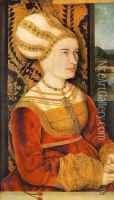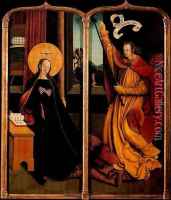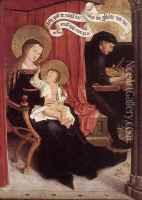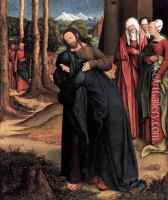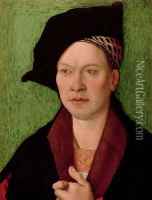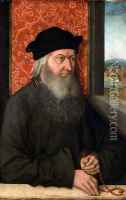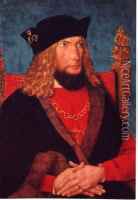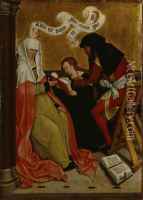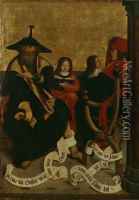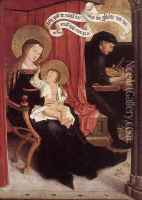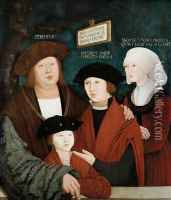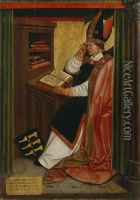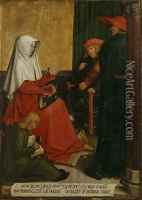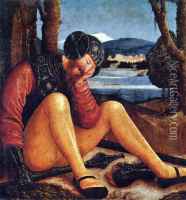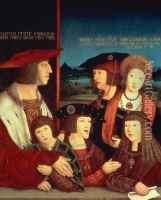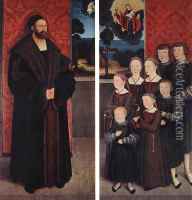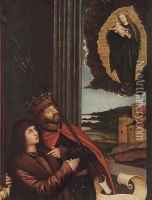Bernhard Strigel Paintings
Bernhard Strigel was a German painter of the Late Gothic period, born in Memmingen, a town in the Swabia region of Bavaria, Germany, around 1460. He belonged to a family of artists; his father, Ivo Strigel, was also a painter, which suggests that Bernhard likely received his initial training within the family workshop. Strigel's work was primarily in the genre of portrait painting, and he is best known for his depictions of the Habsburg family, who were the rulers of the Holy Roman Empire at the time.
Strigel's early work was influenced by the Swabian school of painting, which was characterized by a delicate approach to color and detail and an interest in expressing individual character in portraits. By the 16th century, his style evolved to incorporate influences from the Italian Renaissance, such as a greater sense of volume and form in his figures. Despite these influences, his work retained a certain provincial character that was distinctive of the German tradition.
Throughout his career, Strigel enjoyed the patronage of the Habsburgs, particularly Emperor Maximilian I, who commissioned several works from the artist. Among his notable works are the 'Imperial Family' series of portraits, which depict various members of the Habsburg lineage. These paintings are significant for their historical value, providing a visual record of the imperial family during that period.
Besides portraits, Strigel also produced religious works, including altarpieces and panel paintings depicting scenes from the Bible and the lives of the saints. His religious paintings often featured richly detailed landscapes and interiors, demonstrating his skill in various aspects of composition and perspective.
Bernhard Strigel's legacy lies in his contribution to the development of portrait painting in Southern Germany. His portraits are characterized by their vivid detail and the lifelike representation of his subjects. He passed away in 1528 in Memmingen. Today, his works are housed in various museums and collections around the world, recognized for their artistic and cultural significance in the Late Gothic and early Renaissance periods.
